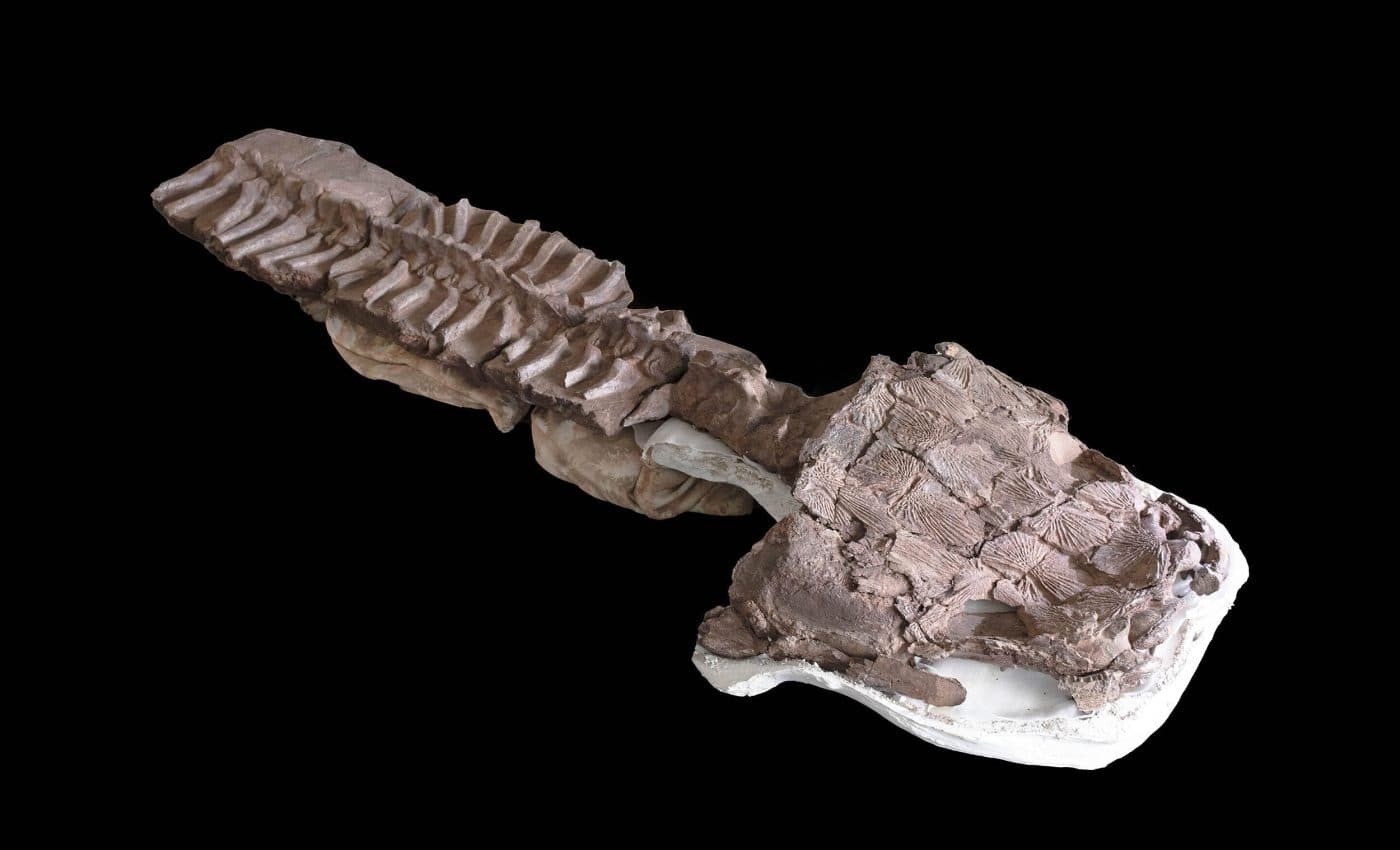After three years of research, an international team has discovered a fossilized giant basal tetrapod in the dry arena of Namibia. Basal tetrapods are ancient four-legged vertebrates that lived during the period when life was transitioning from water to land.

This enormous three-meter-long skeleton that discovered in the Ugab River valley is the largest of its kind ever found. It challenges the long-held belief that these early vertebrates only existed in the northern hemisphere. The find offers vital insights into the early evolution of land animals highlighting the significant role southern continents played and suggesting they should be a focal point for future research.
Study co-author Roger Smith, a distinguished professor at the Evolutionary Studies Institute at Wits University and emeritus research associate at Iziko Museums, Cape Town, explained, “The nearly complete skeleton was preserved in mudstone from an ancient freshwater lake. As the soft tissue decomposed, gases formed that caused calcium carbonate to crystallize around the bones creating a hard crust that protected them from being crushed as they were buried deeper.”
Mr. Sibusiso Mtungata is a skilled fossil technician from the Iziko Museum and he recalls the thrilling moment of discovery. “We had found isolated vertebrae of something big and so we were looking for a more complete skeleton,” said Mtungata.
“I came across two round cylinders of rock with bone in the middle which fitted together and then a third. I called Roger over to help me find more, and as we walked upslope; he spotted a large flat rock which he recognized as the head.” “When we looked along the edge and saw rows of teeth, we knew we had finally found what we had been searching for; a nearly complete skull and skeleton!”
Leave a Reply